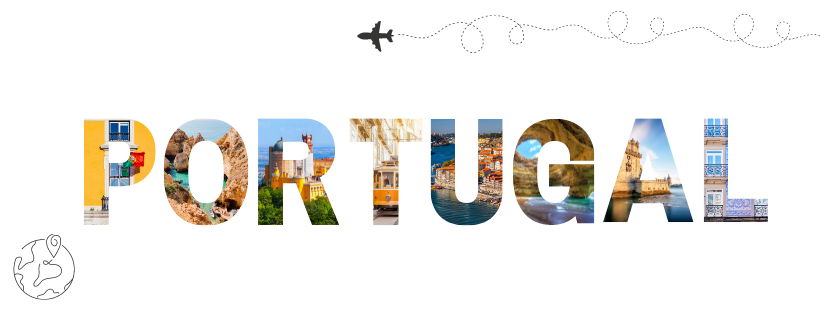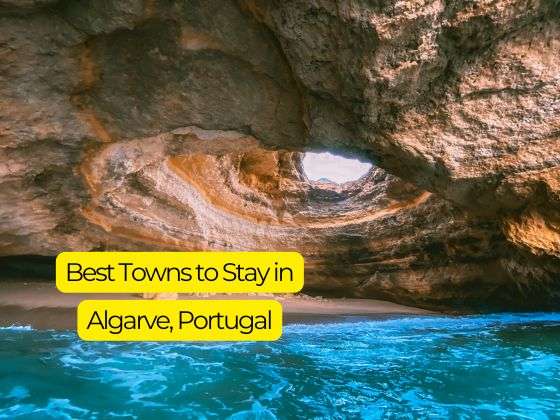Portugal Travel Guides
-
Best Places to Stay in Algarve
Estimated reading time: 13 minutes I visited the Algarve in the summer of 2024. Initially, I thought of spending just a couple of nights and then heading to Porto, but I ended up staying for a whole week! It's the kind
Explore Portugal
1. What is the best time to visit Portugal?
The best time to visit Portugal is during spring (March to May) and fall (September to October) when the weather is mild, and there are fewer tourists. These seasons are ideal for exploring the cities, coastline, and countryside without the summer heat. Summers can be quite hot, particularly in the Algarve, and crowded in popular areas like Lisbon and Porto. Winters are milder, making the southern coast a great destination for escaping the cold. The Portugal travel seasons vary depending on what you want to experience, but spring and fall offer the best balance of weather and crowds.
2. How much does it cost to travel to Portugal?
The cost of travel to Portugal can vary depending on your preferences, but it’s generally an affordable European destination. For budget travelers, daily costs can range from €50 to €70, covering accommodation in hostels, meals at local eateries, and public transportation. Mid-range travelers might spend €100 to €150 per day, enjoying more comfortable hotels, dining at restaurants, and visiting attractions. For a luxury experience, expect to spend over €200 per day, including stays in high-end hotels and gourmet dining. Whether you’re looking for budget travel in Portugal or a more luxurious vacation, there are options for every traveler.
3. What are the must-visit cities in Portugal?
Portugal is home to several incredible cities that should be on any traveler’s list. Lisbon, the capital, is known for its historic neighborhoods, scenic views, and lively nightlife. Porto, famous for its Port wine and picturesque riverside, is a must-visit for wine lovers. Sintra offers stunning palaces and castles, while Évora boasts well-preserved Roman ruins. The Algarve region is perfect for beach lovers, while Coimbra is rich in history and culture. Exploring these top places to visit in Portugal will give you a full taste of the country’s diverse attractions.
4. What is the best way to explore Portugal’s wine regions?
The best way to enjoy wine tourism in Portugal is by visiting its renowned wine regions. The Douro Valley, famous for its Port wine, is a UNESCO World Heritage site and offers stunning vineyard views, boat cruises along the river, and tastings at historic wineries. The Alentejo region, known for its robust reds, provides a more laid-back experience with charming countryside wine estates. To explore, consider renting a car or booking a wine tour. Many tours offer guided tastings and vineyard visits, allowing you to learn about Portuguese winemaking traditions. For a more relaxed experience, stay at one of the wine hotels in these regions.
5. What are the top festivals in Portugal?
Portugal is home to some of the best festivals that celebrate the country’s rich culture. Festa de São João in Porto is a lively event where locals and tourists celebrate with music, fireworks, and bonfires. Lisbon’s Santo António Festival fills the streets with parades, food stalls, and traditional music. Carnival in Madeira is another must-see, featuring elaborate costumes and lively parades. NOS Alive in Lisbon is one of the top music festivals in Portugal, attracting big-name artists. If you’re visiting in June, don’t miss the Festas dos Santos Populares, which is celebrated across the country.
6. What are the best souvenirs to buy in Portugal?
When it comes to souvenirs from Portugal, you’ll find a wide variety of authentic Portuguese products to bring home. Port wine from the Douro Valley is a classic gift, as is Ginja, a cherry liqueur from Lisbon. Traditional azulejos (hand-painted tiles) and ceramics make for beautiful keepsakes. For something unique, consider cork products, like bags and wallets, as Portugal is the world’s largest producer of cork. Other popular items include Portuguese olive oil, handmade linens, and molds for baking the famous Pastéis de Nata.

